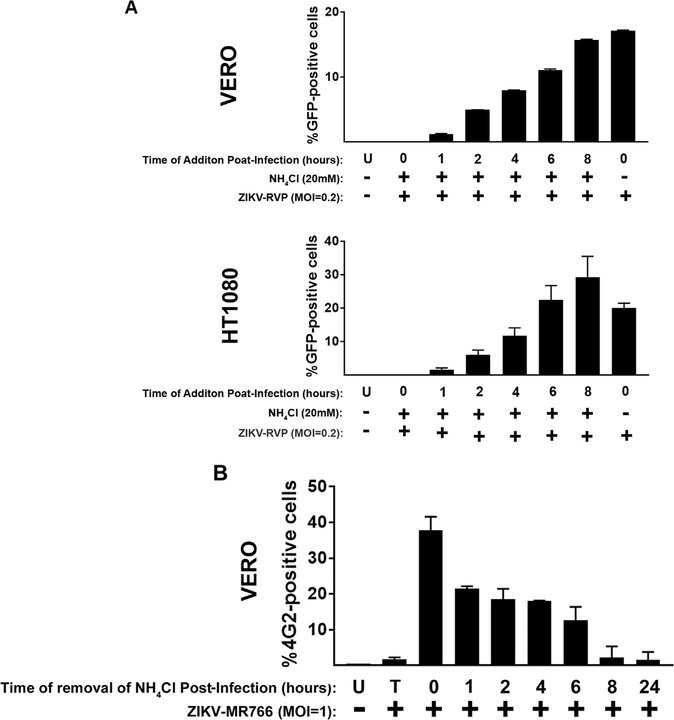Fig. 6. ZIKV in the endocytic pathway.
(A) Kineticts of ZIKV entry. ZIKV-RVPs were pre-bound to Vero or Cf2Th cells at 4 °C for 1. Infection was initiated by shifting the temperature to 37 °C. At the indicated time points, cells were treated with 10 mM ammonium chloride to stop infection. Forty-eight hours post-challenge infection was determined by measuring the percentage of GFP-positive or 4G2-positive cells for ZIKV-RVPs or ZIKV-MR766 infections, respectively. As a control, similar experiments were performed using the pH-dependent pseudo-typed virus HIV-1-VSV-G. (B) Stability of ZIKVs in the endocytic compartments. ZIKV-MR766 viruses were pre-bound to Vero cells at 4 °C for 1 in the presence of 10 mM of ammonium chloride. Infection was initiated by shifting the temperature to 37 °C. At the indicated time points, ammonium chloride was removed to allow the fusion of intact viruses. Forty-eight hours post-challenge infection was determined by measuring the percentage of 4G2-positive cells. Experiments were repeated at least three times and a representative experiment is shown. U: not infected and not treated, T: infected and treated at time 0.

